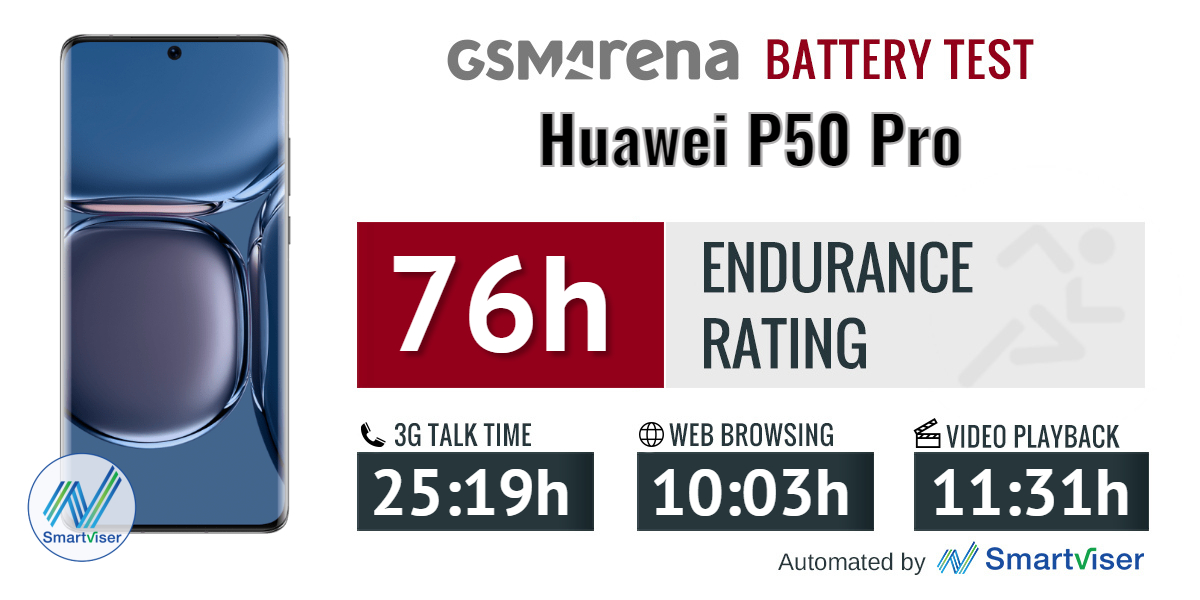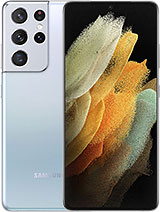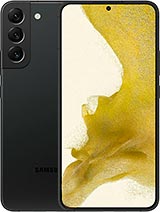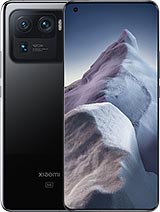Introduction
Huawei's Photography series is back despite, well, everything, and it's back along with the iconic monochrome camera. The Huawei P50 Pro is now available globally, and it brings one of the most interesting camera setups we've seen in a while, Leica-powered, of course. It's a fully-fledged flagship with top-notch hardware across the board, and today, it gets our undivided attention.
The Huawei P50 Pro and P50 Pocket are now available on the international market, while the standard P50 will probably remain a China exclusive. These global units run on EMUI 12, and the firmware on the P50 Pro is based on Android 11 core. And, unsurprisingly, there are no Google services, replaced by Huawei's proprietary package.

The P50 Pro is one of the curviest flagships you can get today, waterproofed, of course. It has a 6.6" OLED of 1228p resolution, 120Hz dynamic refresh rate, 300Hz touch sampling rate, and HDR10+ support. There is no pill-shaped cutout as there is no Face ID or dual-selfie. Yay! The panel has a small perforation for an ultrawide selfie camera with autofocus (double yay!), and there is an optical fingerprint scanner for security purposes.
Huawei's latest flagship runs on the Snapdragon 888 version outside China, while Kirin 9000 is inside the units sold across its homeland. There is no 5G on either, we guess that's probably a consequence of the US ban.
The most interesting bit of the Huawei P50 Pro is its rear camera, and it is quite promising. There is a 50MP primary camera with a 27mm f/1.9 OIS lens and laser-assisted AF. Second is a 40MP true monochrome camera (no Bayer filter) for those iconic dramatic B&W shots. Third comes a 13MP cam with a 13mm f/2.2 lens and autofocus for ultrawide and macro photos.

And last is the telephoto snapper with a 64MP sensor with a Bayer filter and a 90mm f/3.5 OIS lens for 3.5x optical zoom over the primary camera. Because this camera allows shooting in full 64MP (it's not Quad-Bayer), it can offer even more lossless zoom over the promised 3.5x by just cropping from the full 64MP image. Huawei markets this as up to 10x, but we are going to see about that later.
The P50 Pro also features proper stereo speakers, a bunch of mics around its body, an IR blaster, and a multispectral sensor for more accurate colors in photos. It is powered by a 4,360mAh battery that supports up to 66W wired and up to 50W wireless charging with Huawei's proprietary chargers. Oh, and there is NM expansion option, in case you care.
Indeed, the Huawei P50 Pro, despite a few setbacks, seems like a properly intriguing offer. Let's take a quick scroll through the complete specs sheet.
Huawei P50 Pro specs at a glance:
- Body: 158.8x72.8x8.5mm, 195g; glass front, glass back, aluminum frame; IP68 dust/water resistant (up to 1.5m for 30 min).
- Display: 6.60" OLED, 1B colors, 120Hz, 1228x2700px resolution, 19.79:9 aspect ratio, 450ppi.
- Chipset: Kirin 9000 (5 nm), Qualcomm SM8350 Snapdragon 888 4G (5 nm): Octa-core (1x3.13 GHz Cortex-A77 & 3x2.54 GHz Cortex-A77 & 4x2.05 GHz Cortex-A55), Octa-core (1x2.84 GHz Kryo 680 & 3x2.42 GHz Kryo 680 & 4x1.80 GHz Kryo 680); Mali-G78 MP24, Adreno 660.
- Memory: 128GB 8GB RAM, 256GB 8GB RAM, 512GB 8GB RAM, 512GB 12GB RAM; NM (Nano Memory), up to 256GB (uses shared SIM slot).
- OS/Software: HarmonyOS 2.0 (China), EMUI 12 (Europe), no Google Play Services.
- Rear camera: Wide (main): 50 MP, f/1.8, 23mm, PDAF, Laser AF, OIS; Ultra wide angle: 13 MP, f/2.2, 13mm, AF; Telephoto: 64 MP, f/3.5, 90mm, PDAF, OIS, 3.5x optical zoom; Monochrome: 40 MP, f/1.6, 23mm (B/W).
- Front camera: 13 MP, f/2.4, (wide), AF.
- Video capture: Rear camera: 4K@30/60fps, 1080p@30/60fps, 1080p@960fps; gyro-EIS; Front camera: 4K@30fps, 1080p@30/60/240fps.
- Battery: 4360mAh; Fast charging 66W, Fast wireless charging 50W.
- Misc: Fingerprint reader (under display, optical); NFC; Infrared port.
The obvious omissions are two - 5G connectivity and Google services. For some, they may be deal-breakers, but other users couldn't even care. Maybe the great display, the attractive design and the camera with unmatched creative possibilities will be enough to tip the odds in favor of the P50 Pro after all? Let's get this review started and find out.
Unboxing the Huawei P50 Pro
The Huawei P50 Pro comes packed within a thick box that contains more than Apple and Samsung are offering lately. Huawei doesn't have much of a choice really, after everything that's standing in its way.
So, inside that white box, you will find a 66W power adapter and a proper 6A-rated USB-A-to-C cable, which you'll need to squeeze the maximum power of the said charger.

Huawei is also shipping the phone with a soft transparent case, which will come in handy if the grip isn't ideal. And being a smartphone intended for photographers, that case is probably going to be a must.
Finally, the P50 Pro ships with a thin film on its screen, but it's a massive smudge magnet, and we peeled that off immediately. It's there right out of the bat if you need it, though and Huawei gets some points for this.
Design, build quality, handling
We've known Huawei for building expensive-looking smartphones, and the Huawei P50 Pro is yet another proof of that. We loved it from the moment we took this phone out of its box. Its curves, its thin and lightweight body, its unique Leica setup on the back - the P50 Pro is indeed easily likable and premium-looking.

The Huawei P50 Pro is your typical dual-glass dual-curved smartphone with a thin metal frame and slim profile. The curved panels have been somewhat forced out of fashion by Apple, but we are glad Huawei has chosen this shape again. It has Huawei's DNA all over it - the P50 Pro looks a lot like many P and Mate phones before it, and that's a good thing.
 Huawei P40 Pro and P50 Pro
Huawei P40 Pro and P50 Pro
So, the new Huawei P50 Pro is IP68-rated for dust and water resistance. It has a thin aluminum frame and glass panels with symmetrically curved long sides. The frame and the rear glass are made by BYD Electronics. The said glass should be the first high-aluminum lithium glass to be used on a smartphone, co-developed with Huawei. It's supposed to be tougher than regular glass panels, but how tough exactly - we don't know. There is no info on the manufacturer of the front glass.
And while we are speaking about curves, if you've ever handled the P40 Pro, you should know the P50 Pro has steeper edges, and that's why it looks and feels thinner. And it's lighter, too, by 14 grams.
 Huawei P40 Pro and P50 Pro
Huawei P40 Pro and P50 Pro
There are two notable changes since the P40 Pro - the much smaller screen perforation and the different camera design on the back. Arguably, the dual-circle setup looks better, it's unique and fits into the whole curvy narrative. It also looks like Wall-E's eyes, but maybe that's just us.
The Huawei P50 Pro is available in Golden Black (ours), Cocoa Gold, Pearl White, and Charm Pink. All four appear to be of uniform colors with a glossy finish. As you can imagine, they are massive fingerprint magnets, and the smudges are not that easy to wipe from our Black model. If you decided on getting the P50 Pro and plan to use it without the protective case, maybe get a brighter model where you can't see these unpleasantries.
Now, let's look at the Huawei P50 Pro from up close.
The 6.6" HDR10+ OLED is the centerpiece of the Huawei P50 Pro, and naturally, it's been improved since the P40 Pro. While its resolution is similar to the P40 Pro's (450ppi), the screen now supports a dynamic 120Hz refresh rate, 10-bit colors, and 300Hz touch sampling rate. Huawei is also advertising it for its improved dimming process with reduced flickering at low brightness.

The most noticeable change since the P40 Pro is the absence of the pill-shaped cutout. The new P50 Pro has just one selfie camera (yay!) though with its new 18mm lens and high-res sensor with PDAF, it actually acts as three (more on that in a bit). Anyway, the P50 Pro has a tiny punch-hole centered around the top, which is much easier on the eyes.

The screen may appear curved, but it's not - that's an illusion coming from the curved glass. It's been done in the past a lot, so that's hardly surprising.
There is no 3D Face Unlock on the P50 Pro - you can probably tell that by the small notch. The P50 Pro relies on one biometric security option, and that's your typical under-display optical fingerprint scanner. It's fast, accurate and reliable. If you plan to use non-Huawei screen protectors, you may want to reconsider as they can mess with its performance.

Above the screen is one super-thin grille - that's where sound is coming during calls. There is a proper speaker below the screen, and it has two sound outlets - one front-facing and another larger one at the top. That's another upgrade since the P40 Pro - the P50 Pro offers stereo speakers - this, and another one at the bottom.
The back is quite the piece - this camera design is available on Huawei (and Honor) phones and nowhere else. And that's why we can consider it pretty unique and an easy tell for which phone you are using. Not only that, but we found ourselves liking it a lot as it's a breath of fresh air across the black terracotta we've been treated with throughout the past few years.

The rear panel is as curved as the front - no more, no less - and we like this symmetry. The Leica camera, together with the Leica insignia, is the showstopper, of course.
The left circle contains the 64MP zoom telephoto with its periscopic lens, the laser emitter and receiver, a microphone for the camcorder, and the dual-LED flash.
The right part has the 50MP primary, the 13MP ultrawide, and the 40MP monochrome cameras.

Both eyes are jutting out of a pill-shaped glass, which is also jutting out a millimeter from the back. In-between the two circles is the multispectral color temperature sensor that will help for accurate white balance and color reproduction.
The aluminum frame is flat around the top and bottom, and incredibly thin (still flat) around the left and right sides. It is glossy as the rest of the P50 Pro, but it's the only piece to provide grip, and surprisingly, often, it is enough. We've managed to do fine with a case-less P50 Pro, but if you are going to shoot a ton of photos on a trip, the case is probably a must.

The short sides are overcrowded, and they are flat enough to allow for the P50 Pro to stand on its own.

The top has two symmetrical microphones on both ends, an IR blaster and four holes acting as the primary outlet for the sound that's coming from the top speaker.

The bottom has the USB-C port, the SIM/NM card tray, the primary mic, and a six-hole grille for the other speaker.
There is nothing on the left side, while the thin volume and power keys are on the right.

Huawei P50 Pro is a great-looking smartphone, luxurious if you will. It is of a solid glass build and feels amazing when handled. Its slim profile and lighter (than the average) weight do boost its likability, though usability isn't ideal, and a case is preferred for most occasions - to keep it clean and for grip purposes.

Overall, the Huawei P50 Pro is a cameraphone with a fashionable design meant to be both a statement and a tool. And it seems to excel in both so far.
A 6.6-inch high-res OLED
The Huawei P50 Pro employs a 6.6-inch OLED screen with a curved protective glass on top of it. The panel has 2,700 x 1,228 px resolution (450ppi) and has a small perforation to make way for the selfie camera.
The most notable display features, beyond the high resolution, include 10-bit color support, dynamic 120Hz refresh rate, up to 300Hz touch sampling rate, and HDR10+ support.

This is an updated screen over the P40 Pro with a much smaller cutout, more colors (1 billion vs. 16 million), and a faster refresh rate (120Hz vs. 90Hz). And while all of these matter, the absence of the eyesore pill-shaped notch is probably the best improvement from a usability perspective.
First, let's talk about brightness. The Huawei P50 Pro has a brighter panel than the P40 Pro - the screen's maximum brightness is north of 600 nits when adjusting the setting manually. There is an automatic 25% sunlight boost in Auto Brightness mode, increasing the maximum brightness up to 750 nits.
Naturally, the minimum brightness at point white is outstanding - 1.7 nits! Huawei says this panel features a much-improved dimming process, reducing flickering at low brightness and is quite easy on the eyes even at the lowest point.
| Display test | 100% brightness | ||
| Black, |
White, |
||
| 0 | 609 | ∞ | |
| 0 | 754 | ∞ | |
| 0 | 425 | ∞ | |
| 0 | 531 | ∞ | |
| 0 | 455 | ∞ | |
| 0 | 760 | ∞ | |
| 0 | 571 | ∞ | |
| 0 | 605 | ∞ | |
| 0 | 514 | ∞ | |
| 0 | 943 | ∞ | |
| 0 | 458 | ∞ | |
| 0 | 1023 | ∞ | |
| 0 | 852 | ∞ | |
| 0 | 1050 | ∞ | |
| 0 | 406 | ∞ | |
| 0 | 644 | ∞ | |
| 0 | 525 | ∞ | |
| 0.038 | 871 | 22921:1 | |
Moving on to the color rendering. There are two modes in Display settings - Normal and Vivid. Those work differently than on previous Huawei smartphones, though. Now, the Normal option automatically switches between DCI-P3 and sRGB - depending on the current output and targets. And it has an excellent color accuracy with an average deltaE of 2.2.
The Vivid option does what the name suggests - boosts the saturation and pops the colors.
There are three refresh rate options - Dynamic, High, and Standard. The Standard one limits the refresh rate to 60Hz.

The Dynamic uses 90Hz across the UI and most apps to provide smooth scrolling but doesn't limit games and apps that specifically request 120Hz. When a static image is present, the refresh rate drops to 60Hz.
Finally, the High RR option uses 120Hz where possible - meaning UI, browsers, videos, among others. And when the picture is static, the refresh rate reverts back to 60Hz or 90Hz.
And before we wrap this chapter up, here is something interesting - the P50 Pro does come with Widevine L1 DRM support - meaning it is capable of high-res HDR streaming. Of course, the apps need to recognize the phone and be officially available for this device. We tried sideloading Netflix, but it is limited to SD streaming only. Amazon Prime and the web version of YouTube allow for HD (720p) streaming, but still no HDR.
Battery life
The Huawei P50 Pro is powered by a 4,360mAh battery, a slightly increased capacity since the P40 Pro and its 4,200mAh cell.
We've completed our traditional battery life test, and the scores are a mixed bag. We'd say a day of calls and 10 hours of non-stop web browsing are just fine, but 11 hours of video playback is subpar. The final endurance rating of 76 hours is also hurt by the rather average standby consumption.
It seems the Snapdragon 880 4G and the new OLED screen are less efficient than the P40 Pro with the previous OLED and its Kirin chip.

Our battery tests were automated thanks to SmartViser, using its viSerDevice app. The endurance rating denotes how long the battery charge will last you if you use the device for an hour of telephony, web browsing, and video playback daily. More details can be found here.
Video test carried out in 60Hz refresh rate mode. Web browsing test done at the display's highest refresh rate whenever possible. Refer to the respective reviews for specifics. To adjust the endurance rating formula to match your own usage patterns check out our all-time battery test results chart where you can also find all phones we've tested.
Charging speed
The Huawei P50 Pro supports 66W Huawei SuperCharge and ships with the corresponding power adapter and 6A rated cable. It can also do up to 50W Huawei Wireless SuperCharge, but you need to purchase this charger separately.

The bundled 66W charger refills 42% of the P50 Pro's dead battery in 15 minutes and 73% in 30 minutes - outstanding results!
30min charging test (from 0%)
Higher is better
- OnePlus 9 Pro
99% - Xiaomi Mi 11 Ultra
89% - Huawei Mate 40 Pro (66W bundled)
87% - Huawei P40 Pro
80% - Huawei P50 Pro
73% - Huawei P30 Pro
70% - Samsung Galaxy S21 Ultra 5G
54% - Sony Xperia Pro-I
53% - Apple iPhone 13 Pro Max (20W)
42%
Add some extra 10 minutes, and you'll get a 90% charger. Finally, a full charge takes 50 minutes sharp.
Time to full charge (from 0%)
Lower is better
- OnePlus 9 Pro
0:32h - Xiaomi Mi 11 Ultra
0:37h - Huawei Mate 40 Pro (66W bundled)
0:45h - Huawei P50 Pro
0:50h - Huawei P40 Pro
0:50h - Huawei P30 Pro
1:00h - Samsung Galaxy S21 Ultra 5G
1:11h - Apple iPhone 13 Pro Max (20W)
1:46h - Sony Xperia Pro-I
1:49h
Speakers
The Huawei P50 Pro features two speakers symmetrically placed on its top and bottom. The one on top has two outlets (front and top) as it also serves as an earpiece. The previous P40 Pro had a single speaker only, and the new setup is a great improvement.

Naturally, the bottom one is a bit louder and punchier, but thanks to the multi-outlet top speaker, the sound is nicely balanced, and you cannot hear a difference unless you jam one of them.
The stereo speakers on the Huawei P50 Pro scored a Good mark on our loudness test, and it does sound loud enough in real-life scenarios.
The audio quality is excellent - the sound is rich and clean, and we can hear good bass (for a phone), too.
Use the Playback controls to listen to the phone sample recordings (best use headphones). We measure the average loudness of the speakers in LUFS. A lower absolute value means a louder sound. A look at the frequency response chart will tell you how far off the ideal "0db" flat line is the reproduction of the bass, treble, and mid frequencies. You can add more phones to compare how they differ. The scores and ratings are not comparable with our older loudspeaker test. Learn more about how we test here.
EMUI 12 with Android 11 core
Huawei P50 Pro is advertised as running on EMUI 12 in Europe and Harmony OS 2.0 in China. Besides the bloatware, we cannot tell you the difference, but we can show you what our unit has at launch.

So, EMUI 12 is based on Android 11 and has no Google Services. Instead, the EMUI 12 relies on Huawei's Petal Search and Petal Maps, Huawei's own services as part of HMS Core, and the AppGallery app store.
EMUI 12 looks a lot like EMUIs we've seen through the years with plenty of customization options, themes, widgets, and whatnot.
Always-on display is available, and you can choose from a ton of different clock skins. And some of the themes have multiple sub-skins, too. Or you can download even more AOD themes if the pre-installed are not your cup of tea. Then you can opt for always-on, scheduled or tap to show behavior. We suggest the tap to show method as everything else will drain your battery noticeably faster.
Like all EMUI-driven devices, you can set up a magazine lockscreen style that changes the picture every time you wake up the screen. Sliding from the bottom will bring out quick shortcuts to some commonly used utilities.
The Huawei P50 Pro features an optical under-display fingerprint scanner, and it's as fast as these can get nowadays, pretty reliable, too. While both Fingerprint unlock and Face recognition are available, only the first one is truly secure as there is no depth-reading Face ID tech like it was on the P40 Pro.






Lockscreen • Tools • Calculator • Fingerprint options • Settings • Face recongition
On the homescreen, you will find all installed and system apps, but there's a toggle in the settings menu that lets you choose between the standard layout or a homescreen with an app drawer. It's a personal preference, and it's good to be able to choose.
EMUI 12 supports large folders, where one occupies four spaces and holds up to 9 apps. You don't need to expand the folder to launch an app - you just tap on its icon. Simple, yet clever.
The leftmost homescreen page, if enabled, is Assistant Today - this is an infotainment place. It houses a newsfeed tailored for you, weather reports, smart suggestions for apps, health info, battery info, AppGallery suggestions, among other things. You can customize this page - there are a lot of information services available by Huawei partners, you can also add game info, scores, and whatnot. This page looks like it's filled with ads at first, we admit that, but you can really make it yours and fill it with interesting stuff.
The Notification Center and Control Center are handled the Apple way - you swipe from the top for both. Imagine that there is an invisible top bar divided into three parts - swiping from the first two invokes the Notification Center, while swiping from the last third brings down the Control Center and its quick toggles.
Meanwhile, swiping down anywhere on the homescreen takes you to the system-wide Search page, just like on iOS.




Today • Notifications • Control Center • Search
There is no voice assistant on the Huawei P50 Pro and its EMUI, but Huawei Assistant features are available. They include - AI Lens, AI Touch, Tips, Search, Today. We've already explored Today and Search, Tips is self-explanatory, AI Touch allows for quick image/text search by two-finger tap and hold.
AI Lens search for stuff using the camera and item recognition. This is the fastest way to shop for something you are not familiar with - just open AI Lens from the camera or lockscreen and point it to the desired object. You can also identify objects and landmarks with this tool, as well as translate text with the Lens.
There is also a Theme Store, so you can completely change the look of EMUI 12 whenever you feel it.
Multitasking is a familiar affair, and the task switcher allows for split-screen or pop-up mode. Most of the default apps support pop-up view. Multi-window (a.k.a. split screen) is available as well, but it works only via the Multi-Window Dock (swipe and hold anywhere on the left or right). Then just drag and drop an app icon over your currently opened app, and voila! It sure isn't the best way to do this, but it's there.




Recent apps • Pop-up view • Split-screen • Split-screen
The P50 Pro default OS navigation is an iPhone-like gesture - swipe up for Home, swipe up and stop midway for Task switcher, or swipe from the left or right edge of the screen for Back. You can opt for the classic virtual buttons, of course.

Huawei offers a lot of default apps to get you started. There is Huawei's Gallery, Music, Video, and Health apps. A File Manager is available, as well.





Gallery • Music • Video • Health • File manager
You also get Petal Maps, Petal Search and Huawei Browser.




Petal Maps • Petal Maps • Petal Search • Petal Search
Most of Huawei's high-end phones have IR blasters, and so does the P50 Pro. Thanks to its Smart Remote companion app, you can control all of your legacy non-connected appliances with your phone.
Sound Booster is an odd feature with a misleading name. It turns your phone into a listening device that streams the sound to your Bluetooth headphones or speaker (meaning you have to be in Bluetooth range). This could be great for babyphone purposes, as well as spying (the phone's display is usually off).
EMUI 12 has this interesting feature known as Device+ (HarmonyOS has it as Super Device). It aims to strengthen Huawei's ecosystem further. Device+ shows your nearby Huawei devices - like MediaPad tablets, MediaBook laptops, Vision TVs and Freebuds and allows for much easier interaction between those - it's pretty much like Apple's AirPlay. Device+ offers a unified control panel to manage all connections and send audio and/or pictures to any connected Huawei devices.
Say you are wearing your Freebuds, currently connected to your P50 Pro smartphone. Within the Device+ control panel, you can immediately shift your Huawei TV audio to your Freebuds - no pairing, no additional tweaking - something that's usually a Bluetooth/Wi-Fi nightmare is done by tapping on a single button. EMUI handles everything.
Multi-screen collaboration is available from Device+, too. You can easily share your phone/tablet display on to your tablet/laptop screen for easy file editing and exchange, as well as transferring various content, messages or even calls with just drag and drop or a simple click.
Huawei's AppGallery handles the default app installations, but we hate that it shows 3s ads almost every time you open it. We don't find this solution user-friendly - but we guess the focus with this feature has been to help developers promote their apps.
AppGallery has integrated Petal search, and it shows results from other app repositories, like APK Pure and APK Monk. It can also download the app and install it, no need to install their dedicated apps. This is particularly helpful, though its legality is rather questionable.






AppGallery with local and 3rd party installs
You can install, of course, more app stores like APKPure and Aptoide, or even Amazon's Appstore. This way, you can download apps like Facebook and Google Chrome (no sync though), and plenty of other games and office apps. You can install pretty much any APK file, but those relying on Google Services won't run.
Performance and benchmarks
Huawei P50 Pro runs on either Qualcomm's Snapdragon 888 (global) chipset or the Kirin 9000 (China). The SD888 was the best SoC last summer when the Huawei P50 Pro was unveiled. Both versions offer up to 4G connectivity, as Huawei cannot use 5G because of its US troubles.
So, our international P50 Pro runs on the familiar Snapdragon 888 flagship SoC. It still has one of the most powerful processors for Android OS and one of the best GPUs - Adreno 660. The P50 Pro is available with 8GB RAM or 12GB RAM and 256GB or 512GB storage.

We ran a few benchmark tests, and they do show the Huawei P50 Pro is on par with the competition at the time of writing. Its processor is indeed among the best performers right now.
GeekBench 5 (multi-core)
Higher is better
- Sony Xperia Pro-I
3540 - Samsung Galaxy S21 Ultra 5G
3518 - Huawei Mate 40 Pro
3275 - Galaxy S21 Ultra 5G (Snapdragon)
3244 - Huawei P40 Pro
3197 - Xiaomi Mi 11 Ultra
3191 - Huawei P50 Pro
3145 - Google Pixel 6 Pro
2831
GeekBench 5 (single-core)
Higher is better
- Sony Xperia Pro-I
1129 - Xiaomi Mi 11 Ultra
1126 - Galaxy S21 Ultra 5G (Snapdragon)
1109 - Samsung Galaxy S21 Ultra 5G
1107 - Huawei P50 Pro
1105 - Google Pixel 6 Pro
1042 - Huawei Mate 40 Pro
920 - Huawei P40 Pro
780
Same goes for its GPU - you need not worry, the Adreno 660 can handle any game, and it can easily reach 90 or 120 fps on those with unlocked refresh rate.
GFX Car Chase ES 3.1 (onscreen)
Higher is better
- Sony Xperia Pro-I
51 - Huawei P50 Pro
44 - Google Pixel 6 Pro
39 - Xiaomi Mi 11 Ultra
34 - Samsung Galaxy S21 Ultra 5G
33 - Galaxy S21 Ultra 5G (Snapdragon)
33 - Huawei P40 Pro
31 - Huawei Mate 40 Pro
25
GFX Manhattan ES 3.0 (onscreen)
Higher is better
- Sony Xperia Pro-I
116 - Huawei P50 Pro
108 - Samsung Galaxy S21 Ultra 5G
102 - Google Pixel 6 Pro
100 - Xiaomi Mi 11 Ultra
96 - Galaxy S21 Ultra 5G (Snapdragon)
86 - Huawei Mate 40 Pro
78 - Huawei P40 Pro
59
3DMark Wild Life Vulkan 1.1 (offscreen 1440p)
Higher is better
- Google Pixel 6 Pro
6602 - Huawei Mate 40 Pro
6170 - Sony Xperia Pro-I
5753 - Samsung Galaxy S21 Ultra 5G
5691 - Xiaomi Mi 11 Ultra
5676 - Huawei P50 Pro
5651 - Galaxy S21 Ultra 5G (Snapdragon)
5547
Finally, the AnTuTu tests also put the Huawei P50 Pro among the most powerful Android smartphones right now.
AnTuTu 8
Higher is better
- Huawei P50 Pro
793876 - Xiaomi Mi 11 Ultra
688720 - Galaxy S21 Ultra 5G (Snapdragon)
657273 - Samsung Galaxy S21 Ultra 5G
657150 - Google Pixel 6 Pro
585485 - Huawei Mate 40 Pro
531270 - Huawei P40 Pro
496356
AnTuTu 9
Higher is better
- Xiaomi Mi 11 Ultra
794016 - Huawei P50 Pro
786215 - Sony Xperia Pro-I
725839 - Google Pixel 6 Pro
719815
The Huawei P50 Pro, just like many other Huawei devices, offers Performance and Battery Saving modes in its battery settings. When enabled, the Performance mode allows the P50 Pro to reach a higher temperature ceiling and thus throttle less frequently. The benchmark scores in both modes are nearly identical (5% diff), but the sustained performance differs.
Being such a thin device with glass panels has its price and it's less-than-ideal heat dissipation. When using the default battery mode, the P50 Pro gets warm, and it throttles when the device reaches an internal temperature of 45C or so. This leads to 50% GPU, and 70% CPU sustained performance. While the processor throttling is in line with other SD888 devices, the graphics throttle is subpar (3D Mark Stress Test).
If the Performance mode is enabled, it allows the device to reach about 65C of internal temperature before it throttles. This way, the P50 Pro offers about 80% GPU and 85% CPU stability. There is a catch - while using 100% of the CPU, the P50 Pro overheated three times and dropped the CPU speed down to 30% for a minute for cool down purposes and then brought it back up to 85%-100%. This will be felt harshly in real-life.
Of course, things are much better with real-life cases - no game or app will eat that many resources ever and even if some throttling will probably occur when playing for hours, it won't be noticeable. We suggest using the P50 Pro in its default battery state. But if it happens that you find a game or app that may require more - then try the Performance mode.
The latest Leica-powered camera
The Huawei P series, since the P10, has been famous for its Leica-powered cameras, and the P50 Pro is no different. The P10 and P20 introduced monochrome cameras, absent on the P30 and P40 series, but the B&W camera is now returning with the P50 Pro. We also get three more cameras - a regular wide-angle, an ultrawide-angle, and a two-step telephoto. Oh, and an ultrawide-angle selfie with autofocus!

So, the Huawei P50 Pro features a 50MP main camera (probably OmniVision OV5A 1/1.56" with a Quad-Bayer filter) behind a 23mm (27mm per the EXIF) f/1.8 OIS lens. PDAF and Laser AF assistance is available here. The camera saves 12.5MP photos, but 50MP and 50MP AI modes are available.
Second is the 13MP camera with a 13mm f/2.2 lens for ultrawide-angle photos. AF is available, too, so you can take closeup shots with it as well.
Third is the 40MP monochrome camera, meaning the sensor omits a Bayer color filter, which should allow light to reach the sensor more easily and with higher quality. Its field-of-view is the same as the main camera's. Besides allowing great high-contrast moody B&W shots, its input is also used to reduce the noise and enhance clarity when shooting with the other cameras as well. This camera saves 12.5MP photos, and there is no way to get the native 40MP output.
Finally, the last rear camera is the 64MP zoom snapper. The sensor has a proper Bayer filter instead of the widespread Quad-Bayer ones. It has a 90mm (95mm per EXIF) f/3.5 OIS periscopic lens for 3.5x optical zoom over the main camera. This camera takes 16MP pixel-binned photos, but it can also provide up to 7x lossless zoom by cropping from the 64MP sensor. Huawei has two fixed presets in the camera app - 3.5x and 10x.
There is a dual-LED flash, Laser emitter and receiver that help the autofocus, as well as a multispectral color temperature sensor for better color reproduction and white balance across all rear cameras.
The selfie camera is quite interesting, too. It has a 13MP sensor behind an 18mm f/2.4 lens, and phase-detection autofocus is available! You choose between three crop modes - wide-angle (18mm, no crop), 0.8x (21mm equiv.) and 1x (27mm equiv.).

The camera app has hardly changed since previous Huawei phones. You have a Mode selector on the bottom, which you can swipe left or right to change modes. You can add more options on this bar, too.
Zooming has been fixed since the P50, and the selector is now where it should be - at the bottom in portrait and to the left in landscape orientation. It has four fixed steps - UW, 1x, 3.5x and 10x. You can use other zoom levels by swiping on the zoom bar, of course.
The camera app is enhanced by Huawei's AI, just as before. There is an improved Master AI, which recognizes and tunes settings for a ton of scenes. There's a toggle in the viewfinder for turning it off and on, so you don't have to go into settings for that. We tend to keep it off, although the recent implementations are nowhere as aggressive as they used to be with phones in the past.

There's a Pro mode too where you can adjust parameters yourself - ISO (50 to 409,600), shutter speed (1/4000s to 30s), exposure compensation (-4 to +4EV in 1/3 stop increments), and white balance (presets and specific light temperature). You can also choose the metering mode (matrix, center-weighted, and spot), and the focus mode (single, continuous, and manual). If the phone thinks you messed up the exposure, an icon will pop up to warn you. Mind you, Pro mode is available on all rear cameras.
By the way, Pro mode is available for video as well, and the maximum ISO there is 6,400. And you can set the desired shutter speed.
For years now, Huawei phones have had both a Portrait mode and an Aperture mode. In Aperture, you can choose the simulated aperture in the range from f/0.95 to f/16. Post shot, you can change the aperture and the desired focus point within the Gallery.
Finally, there are three Leica filters, in addition to many Huawei ones. Well, actually two as Leica standard is the standard shooting mode across all cameras (meaning no filter). The rest are Leica Vivid and Leica Smooth - as always.
Photo quality
The main camera (1x) saves 12.5MP photos by default, and they are simply outstanding! The resolved detail is abundant, there is no noise, and the processing offers just the right amount of sharpening, giving the images a balanced and natural look. Huawei is usually gentler with the sharpening than most of its competitors, and we really like the samples we shot in broad daylight.
The photos exhibit excellent contrast, the colors are lively and true to life, while the dynamic range is nothing short of impressive.
Overall, the photos from the main camera are among the best we've seen from a smartphone and worthy of the Huawei P and Leica branding.
Important: If you inspect the photos up close, you will notice that some of them have their left parts blurred. It appears that our unit has an odd lens issue (it happens sometimes), which should not be present on other P50 Pro phones, and we will not take it into account when commenting on the quality. Usually, if you experience such lens issues, you need to talk with an authorized service center for repair or replacing the device.
There is a dedicated high-res mode within the camera app, and it offers two choices - 50MP and 50MP AI. The default 50MP option saves upscaled versions of the 12.5MP images, and they are of no use.
The 50MP AI was once called AI Ultra Clarity, and like the Night Mode, it requires a couple of seconds to capture a few 50MP images and stack them together. The 50MP AI samples are more detailed than the standard 50MP ones, but if downsized to 12.5MP, they won't be better than the default ones, on the contrary. And that's why we think no one will use either of these 50MP options - there are simply no benefits.
The main camera is also the primary portrait shooter, and it does a brilliant job. The 12.5MP portraits (1x zoom) we took with it offer proficient subject separation and natural-looking blur, while the subjects remain detailed and sharp. The colors and the dynamic range and quite good, too.
There are more zoom levels within the Portrait mode (2x, 3x), but they provide digital zoom over the main camera and save pretty soft portraits.
The ultra wide-angle camera supports autofocus that allows it to shoot macro photos, too. There is a downside to it, though, sometime the focus won't lock properly on infinity and will result in soft images. You can spot a few occasions in the batch below.
The inaccurate focus aside, the 13MP ultrawide camera is quite capable and produces detailed and sharp enough photos. The automatic corner straightening is impressively proficient, too.
Just like the main photos, the ultrawide ones also offer excellent contrast, colors and great dynamic range.
This is definitely one of the better UW cameras we've met in a while, and it does save commendable panoramic photos. Our advice is to tap often around the center before taking a picture so you can avoid out-of-focus images.
Shooting a macro photo with the ultrawide camera is possible and quite easy. Usually, those are detailed, sharp, contrasty, and preserved color saturation. We found the closeups with the primary camera to be somewhat better, though because of the more natural bokeh and often more detailed center, so you may want to try and see what looks nicer to you.
The zoom camera on the Huawei P50 Pro is incredibly interesting. It uses a normal 64MP sensor with 90mm OIS lens, and it provides about 3.5x zoom over the main camera. The photos are saved in 16MP resolution.
But this camera can also achieve lossless zoom by just cropping from the center of the original 64MP image. This means when the algorithm crops the 16MP center of the 64MP output, it should be equivalent to 180mm or 7x zoom over the main camera.
So, to achieve the 10x magnification, the algorithm crops even more (say, 10MP-12MP) and then upscales it back to 16MP - which will lead to some loss of detail and reduce the sharpness.
Let's start with the 3.5x zoomed photos - it's the third fixed step on the zoom bar. Well, those are exceptional. The resolved detail is notably high, there is no visible noise, the contrast is great, the colors are accurate, and the dynamic range is superb. The foliage, where available, looks awesome.
The best thing about these zoomed images is their natural look - they have just the right amount of sharpness applied with nothing over the top. It's rare to see such well-balanced photos, so kudos to Huawei!
The final fixed step on the viewfinder is 10x. As we established, these aren't lossless, but they should still be good enough.
The 10x photos are better than the 10x on the Huawei P40 Pro (upscaled and cropped from 5x) and not that worse from native 10x images we've seen from the Huawei P40 Pro+ and the Galaxy S21 Ultra. In fact, if we downsize these to 8MP, they would look excellent.
Of course, the P50 Pro saves the 10x pictures in 12.5MP photos, and they do look a bit upscaled - you can see the average detail and the lack of sharpness. They do excel in everything else - white balance, contrast, dynamic range, noise reduction.
So, despite the hoops and loops the phone goes through to deliver these 10x photos, they are perfectly usable and look great on the phone's display, our monitors, and even when cast on the larger HDTV screen. For pixel peeping, they could use some downscaling to say, 6MP-8MP.
Finally, we shot a few samples at about 7x zoom - the maximum that can be considered lossless. They all look sharp and lively, even if not as sharp as the 3.5x ones. As usual, they are nicely balanced, and we can only say good things about them.
The 40MP monochrome camera saves 12.5MP photos - it seems Huawei wanted to match the resolution of the main camera, and that's fine. There is no option to save the native 40MP image, though.
The photos we took with the B&W camera are stunning - the detail level is magnificent, the contrast is amazing, and the dynamic range in most scenes is jaw-dropping. Noise, of course, is absent.
If you are a fan of monochrome pictures, there is hardly another current smartphone to take better B&W photos.
Huawei was one of the Night Mode pioneers, but it appears the technology has evolved, and we don't need it anymore. Don't worry, it's still present, and it can always brighten your nighttime photos, should you want that.
It's just that the default nighttime photos out of the main camera are brilliant without it. The detail is plenty, the exposure is excellent, and so is the dynamic range. Blown highlights are a rare occurrence, while the shadows are natural-looking.
The color saturation is outstanding, the noise is incredibly low, and once again, the images offer a very natural look with spot-on sharpness. These regular (probably heavily multi-stacked, of course) photos are among the best we've seen lately, and no Night Mode was needed to take them.
Night Mode, of course, is available, and it takes 1s to shoot and another second to save the photo. The difference between the regular and NM samples is minimal if any. Usually, the Night Mode brightens some shadows and the skies while fixing clipped highlights (if there were any). Sometimes it may over-saturate the colors and give them somewhat an artificial look.
The 13MP ultrawide photos we took at night are incredible for such type of camera. Sure, they are a bit soft, but the noise reduction has done an amazing job, and the colors are accurate and punchy, the contrast is good, and so is the exposure.
Unlike other ultrawide shooters, which we usually label as usable, this one is great (among its kind) and deserves praise. And it gets even more points for taking these images without Night Mode.
Speaking of Night Mode, you can use it on the ultrawide camera, but we can barely see any difference. It takes 1s and may or may not pop the colors, usually the skies and lights, and that's about it.
We think the camera app already does some sort of a Night Mode-like processing, even if for a shorter (than 1s) time. And you can see for yourself it's not just adequate, it's great. And that's why we see no reason to manually opt for the Night Node, no matter which camera you are using - primary or ultrawide. Master AI was off all the time, in case you were wondering.
The telephoto camera takes good photos at 3.5x zoom; that is when the camera app decides on using it. Just like it happens on other phones, that's not always the case (fourth and sixth photos are digital zoom over the main camera).
So, the images taken with the actual tele camera are sharp enough with adequate detail levels, with notably low noise, good exposure and very good contrast, and they all retain excellent color saturation.
The Night Mode worked the same way - used the zoom camera for all but number 4 and 6. Sometimes it improves on the sharpness and colors, but only if necessary - meaning once again we can't see many benefits of using the Night Mode and holding your hand for up to 5 seconds this time.
The 10x photos are always shot on the telephoto camera, and they are actually alright; just don't look at them at full resolution - they are not that detailed even if low on noise (remember, they are upscaled from the 7x or so).
Just like the 3.5x photos, the 10x offer good exposure and superb colors. If you really need to zoom at that far at night, the camera will do a surprisingly good job, probably better than most if not all smartphones so far.
Night Mode is available at 10x zoom, too, and you guess that right, it takes pretty much the same-looking photos as the regular shooting mode. Rarely it can do for improved sharpness and brightness and even more popping colors.
The monochrome camera omits a Bayer filter, and this means more light can reach the sensor. More light also means less noise and better sharpness. This camera comes with a bright f/1.6 lens, too. And the photos it saves at night are top-notch with a balanced look, plenty of detail, and admirable contrast.
The dynamic range is lower than expected as there are many clipped highlights - probably due to the combination of bright lens, no Bayer filter and less image stacking. We don't mind that, in fact, it's probably the desired effect for more dramatic photos.
And here are photos of our usual posters taken with the Huawei P50 Pro. You can see how it stacks up against the competition. Feel free to browse around and pit it against other phones from our extensive database.



Huawei P50 Pro against the Xiaomi Mi 11 Ultra and the Samsung Galaxy S21 Ultra 5G in our Photo compare tool
Selfies
The selfie camera is quite a unique piece of tech. It uses a 13MP sensor with unusually large 1.22µm pixels and an unusually wide-angle 18mm f/2.4 lens. It also supports PDAF, a feature that's still rare among the selfie cameras, to begin with.
Huawei offers three view or crop modes for the selfies - W, 0.8X and 1X - and these correspond to focal lengths of 18mm, 21mm, and 27mm (in 35mm equivalent). Those are achieved by digital zoom plus some AI-enhanced multi-stacking.
The default (18mm) selfies are one of the best selfies we've encountered to date. They are incredibly sharp and detailed, with Huawei's signature balanced look, accurate colors, superb colors and great dynamic range in most cases.
We don't know how Huawei did it, but we cannot tell the 0.8x selfies (21mm) are digitally zoomed. In fact, they look as sharp as the default pictures and excel in everything in just the same way.
Finally, the 1x (27mm) selfies are also fantastic, though here we can notice a minor drop in the sharpness. But it's so small that we can consider them just as good as the rest of the bunch.
There is Portrait mode for selfies, but it doesn't appear to be offering simulated blur. Instead, it has various Lighting effects (including all-black background) and beautifications.
Video recording
The Huawei P50 Pro records video up to 4K at 60fps with the primary, the monochrome and telephoto cameras, and up to 4K at 30fps with the ultrawide and the selfie cameras.
Optical stabilization is available on the primary and zoom cameras, while always-on electronic stabilization is present across all five shooters. You cannot turn the EIS off.
The Huawei P50 Pro supports time-lapse, 240fps slow-mo, dual-video with two cameras at once, and in the Manual video mode, you can shoot at ISO 51,200 for super low-light quality. You can use directional audio zoom when zooming in or out when capturing a video.
The 4K30 footage has a video bitrate of 39-40Mbps. Audio is always captured stereo with 96kbps bitrate, but don't let the low number fool you - the sound is usually clean of wind and other disruptions, rich and deep.
The main camera records pretty good 4K videos with enough detail and once again - a nicely balanced look. Their contrast is high, the colors are accurate, and the dynamic range is usually slightly better than the average. The videos could have benefited from a little bit more sharpness, but we suppose the always-in electronic stabilization is to blame for that.
The 4K clips captured on the ultrawide camera are good, too. They also have enough detail, and the colors are accurate though they can use a contrast boost. The dynamic range can be tweaked a bit, too. Still, even as is - those are solid ultrawide videos.
The telephoto camera has two zoom levels when capturing videos - 4x and 10x. The 4x videos are excellent - with more than enough detail, good sharpness, realistic colors, commendable contrast and high dynamic range.
The 10x zoomed videos are soft and with poor detail when zoomed, otherwise they show good contrast and accurate colors. If you don't look them up closely or if they are shot at 1080p resolution, they will turn up usable.
The footage from the monochrome camera is outstanding - detailed, with superb contrast and dynamic range. The EIS once again took a small chunk of the sharpness, but the natural look is here, and we liked what we saw.
The low-light videos from the main camera are good - they are more detailed than we expected, with realistic exposure and very good color saturation. The noise is impressively low.
The ultrawide camera captured barely usable videos at night as those appear to be quite noisy and dark. We can still see what's going on, and color saturation is good. We suggest using the camera only in extreme cases.
The 4x zoomed videos are quite nice even if a bit dark - there is a lot of detail, the colors are great, and while noise is present - it doesn't get in the way. This camera delivers good videos at night and you can expect more than satisfying clips.
The 10x zoomed videos are digitally zoomed, and while soft, they do have tolerable noise accurate colors, and you can see what's happening. They look really well on the phone's screen, too.
Finally, the monochrome low-light videos are uninspiring. While there is enough detail, the picture is noisy, and the dynamic range is low with plenty of blown highlights. We expected more from this camera at night.
Finally, here is the Huawei P50 Pro in our video comparison database.



2160p: Huawei P50 Pro against the Xiaomi Mi 11 Ultra and the Samsung Galaxy S21 Ultra 5G in our Video compare tool
The competition
There are plenty of good cameraphones on the market, but it cannot be a fair fight when it comes to the P50 Pro. Huawei has been severely crippled by the US ban - it has no access to Google Play Store and the Google Mobile Services, and it cannot offer 5G connectivity at this point.
The good news is that Huawei has been overcoming the struggles throughout the past few years, and it has launched a few flagship devices with intriguing features. It has also baked its own Huawei services and apps into EMUI and HarmonyOS, essentially replacing Google's missing stuff. Sure, Huawei's offerings aren't as good as Google's right now, but Google has had a decade to develop theirs.

The Huawei P50 Pro is the latest proof that Huawei is still standing and doing what it does best to show it has a place on the market - making good phones with unique cameras and attractive designs. The P50 Pro seems like a great flagship phone even without 5G connectivity and Google Play Services. It has outstanding features like the premium design and screen, top-notch chipset, and full of creativity Leica camera to win you on its side.
The first phone that comes to mind as a direct competitor is the Galaxy S21 Ultra. It's as powerful, with an even larger OLED screen, better battery life, and a similar quad-camera that, instead of a monochrome shooter, offers a real 10x telephoto in addition to the 3x one. There is also a good chance you'd buy the S21 Ultra at about €200 cheaper than the P50 Pro.
That's because the S22 Ultra is just around the corner. It's going to cost as much as the P50 Pro and will offer the best screen Samsung has made to date, even more powerful hardware, and a larger battery. The camera is what matters the most, and while it won't be that different from the S21 Ultra, it will still have a real 10x zoom camera. Of course, having Google Services and 5G helps a lot, too.
Xiaomi Mi 11 Ultra has a limited availably, probably due to supply issues, but if you can snatch one, you need to seriously consider it. It has an amazing Dolby Vision-capable OLED, it runs on the Snapdragon 888 5G chip, but its camera is the real showstopper as it offers the best photo and video quality from the smartphone to date. And thanks to the small rear display, you can use this incredible triple-camera for selfies. The Mi 11 Ultra costs as much as the P50 Pro, and it's definitely worth it.
Many people are buying the Apple iPhone 13 Pro Max for its photo and video capabilities. Indeed, it has some very capable hardware across the board, cameras included, though it's not known for the most organic photos on the market. The videos, on the other hand, are among the best a smartphone can offer. It runs on Apple's iOS, which is not everybody's favorite OS, but if you can put up with Apple's way of handling things, you may want to give it a chance.




Samsung Galaxy S21 Ultra 5G • Samsung Galaxy S22+ 5G • Xiaomi Mi 11 Ultra • Apple iPhone 13 Pro Max
Finally, if you are a fan of the Huawei brand and you still want one, but cannot live without Google, the Honor Magic3 Pro, where available, has all Google apps and services. It is pretty much the Huawei P50 Pro but with a different design and an extra ToF sensor next to the selfie for Face ID (within a pill-shaped notch). Honor has split from Huawei and has been granted access to Google's proprietary services, so it's worth considering instead of the P50 Pro.
Our verdict
The Huawei P50 Pro is a great smartphone with great pedigree, and you can tell that by its premium design and photography-oriented hardware and features. The P series has been around for many years, and Huawei has always raised the bar with its cameras. The P50 Pro is no different.
Huawei's latest cameraphone easily impresses with the latest generation Leica camera that's put within a unique dual-circle setup. The use of a 64MP sensor with a Bayer sensor has paid off with lossless zoom up to 7x. The return of the monochrome camera, 40MP at that, will definitely intrigue creators who have a knack for the B&W dramatic photos.

The P50 Pro is undeniably a good smartphone - its screen and performance are great, as well as the speakers, the software package, the overall camera experience, and the charging speed, too. If you fancy a cameraphone of high quality, the P50 Pro is a proper option.
While its battery life turned out uninspiring, its biggest hurdles are the lack of Google services and 5G. Still, if anyone can live without 5G speeds and you can do just fine on a mixed diet of App Gallery and third-party app stores, then the P50 Pro might be a good fit.
Huawei's own ecosystem with watches, laptops, headphones, speakers, TVs and tablets has grown immensely over the last couple of years, and that's its biggest ace when selling smartphones like the P50 Pro. If you own a laptop and/or a tablet, or maybe a wearable and/or a pair of wireless earbuds, there is a good chance you will like how these go with a Huawei smartphone. The integration is nearly Apple-level good, and that's something that sells devices.
There are a lot of reasons why not to choose this or any Huawei phone. But there are also quite a few compelling arguments why you should do it - be it for creativity, for a change of scenery, for the great features and outstanding camera experience with unmatched creativity, or because you own another Huawei device. One thing is sure - if you do decide in favor of P50 Pro - you will probably like it as we did, despite its setbacks.
Pros
- Slim dual-glass curved design, good-looking, IP68-rated.
- Bright OLED screen, 120Hz refresh, 300Hz touch rate, HDR10+, tiny notch.
- Superb stereo speakers.
- Fast charging bundled 66W charger.
- Adequate flagship performance.
- One of the best cameras on the market with great photo and good video quality.
- Outstanding selfies!
- EMUI 12 is quite powerful even without Google.
- Works and talks well with other Huawei devices.
Cons
- Mediocre battery life.
- No Google Services.
- Few if any HDR10-compatible apps.
- No 5G.
- May throttle under peak loads.
from GSMArena.com - Latest articles https://ift.tt/MJcpvHW
via IFTTT
Bagikan Berita Ini






















































































































































































































































































0 Response to "Huawei P50 Pro review"
Post a Comment